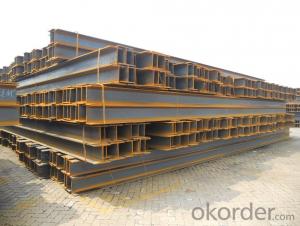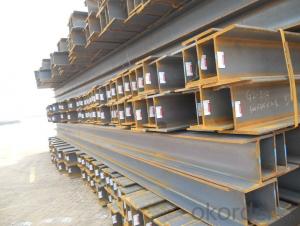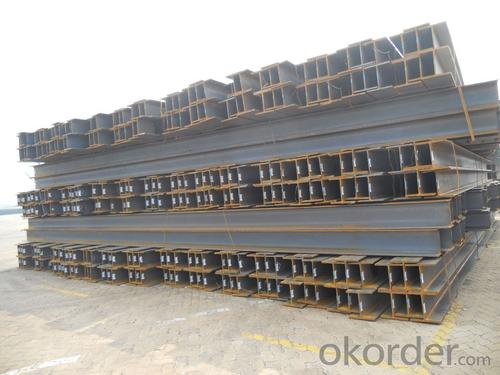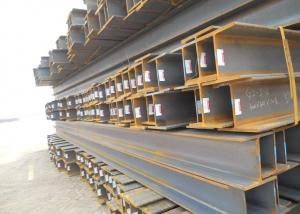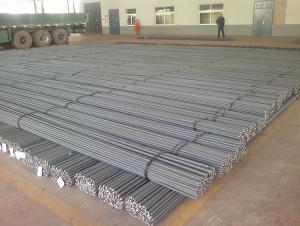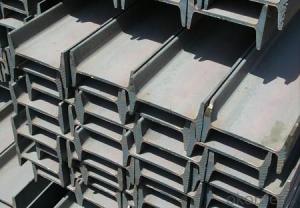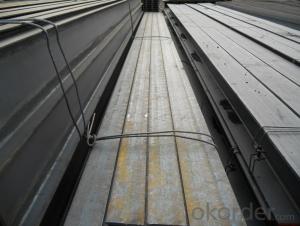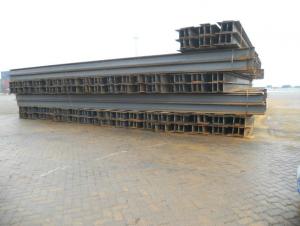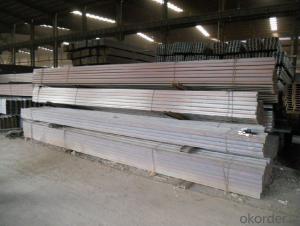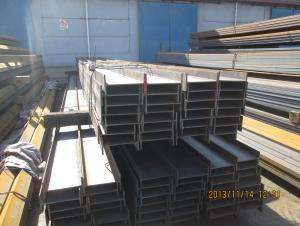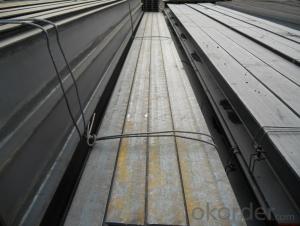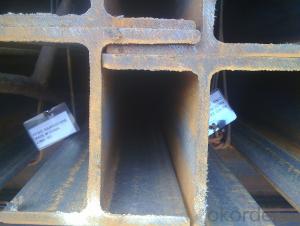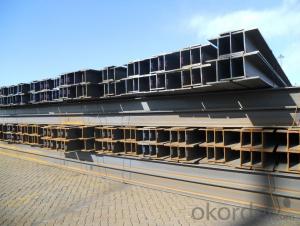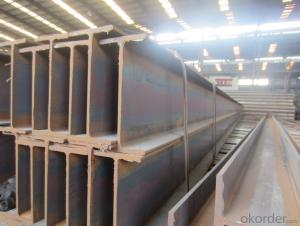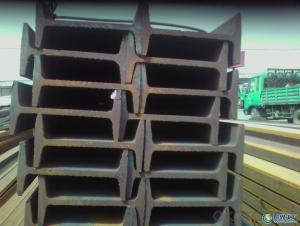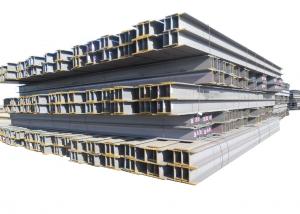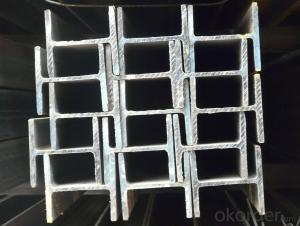Hot Rolled Structual Carbon Steel H-beam Bar
- Loading Port:
- China main port
- Payment Terms:
- TT or LC
- Min Order Qty:
- 25 m.t.
- Supply Capability:
- 1000 m.t./month
OKorder Service Pledge
OKorder Financial Service
You Might Also Like
Product Description:
OKorder is offering high quality Hot Rolled Steel I-Beams at great prices with worldwide shipping. Our supplier is a world-class manufacturer of steel, with our products utilized the world over. OKorder annually supplies products to European, North American and Asian markets. We provide quotations within 24 hours of receiving an inquiry and guarantee competitive prices.
Product Applications:
Commercial building structure ;Pre-engineered buildings; Machinery support structure; Prefabricated structure; Medium scale bridges; Ship-building structure.etc.
Product Advantages:
OKorder's Steel I-Beams are durable, strong, and resist corrosion.
Main Product Features:
· Premium quality
· Prompt delivery & seaworthy packing (30 days after receiving deposit)
· Corrosion resistance
· Can be recycled and reused
· Mill test certification
· Professional Service
· Competitive pricing
Product Specifications:
Manufacture: Hot rolled
Grade: Q195 – 235
Length: 6m – 12m, as per customer request
Packaging: Export packing, nude packing, bundled
H x B
(mm)
| T1 | T2 | JIS Weight
(kg/m)
| GB Weight
(kg/m)
|
100*100 | 6 | 8 | 16.9 | 17.2 |
125*125 | 6.5 | 9 | 23.6 | 23.8 |
150*75 | 5 | 7 | 14 | 14.3 |
148*100 | 6 | 9 | 20.7 | 21.4 |
150*150 | 7 | 10 | 31.1 | 31.9 |
175*90 | 5 | 8 | 18 | 18.2 |
175*175 | 7.5 | 11 | 40.4 | 40.4 |
198*99 | 4.5 | 7 | 17.8 | 18.5 |
200*100 | 5.5 | 8 | 20.9 | 21.7 |
194*150 | 6 | 9 | 29.9 | 31.2 |
200*200 | 8 | 12 | 49.9 | 50.5 |
248*124 | 5 | 8 | 25.1 | 25.8 |
250*125 | 6 | 9 | 29 | 29.7 |
244*175 | 7 | 11 | 43.6 | 44.1 |
250*250 | 9 | 14 | 71.8 | 72.4 |
298*149 | 5.5 | 8 | 32 | 32.6 |
298*201 | 9 | 14 | 65.4 | |
300*150 | 6.5 | 9 | 36.7 | 37.3 |
294*200 | 8 | 12 | 55.8 | 57.3 |
300*300 | 10 | 15 | 93 | 94.5 |
346*174 | 6 | 9 | 41.2 | 41.8 |
350*175 | 7 | 11 | 49.4 | 50 |
340*250 | 9 | 14 | 78.1 | 79.7 |
350*350 | 12 | 19 | 135 | 137 |
400*200 | 8 | 13 | 65.4 | 66 |
390*300 | 10 | 16 | 105 | 107 |
400*400 | 13 | 21 | 172 | 172 |
446*199 | 8 | 12 | 65.1 | 66.7 |
450*200 | 9 | 14 | 77.9 | 79.5 |
440*300 | 11 | 18 | 121 | 124 |
496*199 | 9 | 14 | 77.9 | 79.5 |
500*200 | 10 | 16 | 88.2 | 89.6 |
488*300 | 11 | 18 | 125 | 129 |
596*199 | 10 | 15 | 92.5 | 95.1 |
600*200 | 11 | 17 | 103.4 | 106 |
588*300 | 12 | 20 | 147 | 151 |
700*300 | 13 | 24 | 182 | 185 |
800*300 | 14 | 26 | 207 | 210 |
900*300 | 16 | 28 | 240.1 | 243 |
Payment:
-Invoicing on theoretical weight or actual weight as customer’s request.
-FOB, CFR or CIF.
-Regular terms of payment:
1, 30% payment in advance, the remaining balance (70% payment) against the copy of B/L. 100% payment before shipment.
2, 30% payment in advance, the remaining balance (70% L/C) against the copy of B/L. 100% payment before shipment.
3, Negotiable.
Production flow of Hot Rolled Steel H-beam For Sale
Material prepare (billet) —heat up—rough rolling—precision rolling—cooling—packing—storage and transportation
FAQ:
Q1: Why buy Materials & Equipment from OKorder.com?
A1: All products offered byOKorder.com are carefully selected from China's most reliable manufacturing enterprises. Through its ISO certifications, OKorder.com adheres to the highest standards and a commitment to supply chain safety and customer satisfaction.
Q2: How do we guarantee the quality of our products?
A2: We have established an advanced quality management system which conducts strict quality tests at every step, from raw materials to the final product. At the same time, we provide extensive follow-up service assurances as required.
Q3: How soon can we receive the product after purchase?
A3: Within three days of placing an order, we will begin production. The specific shipping date is dependent upon international and government factors, but is typically 7 to 10 workdays.
Images:
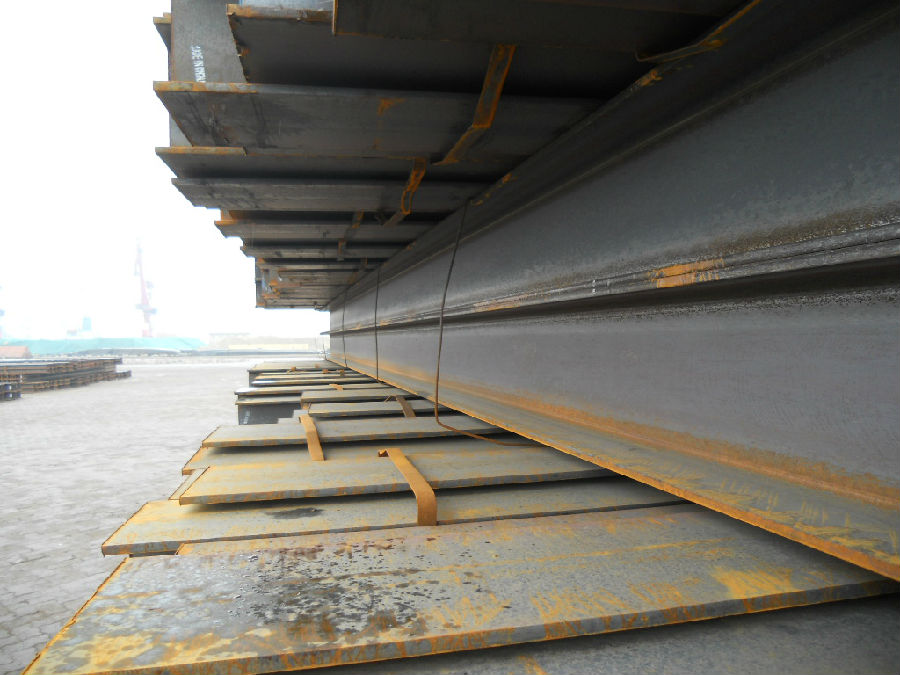
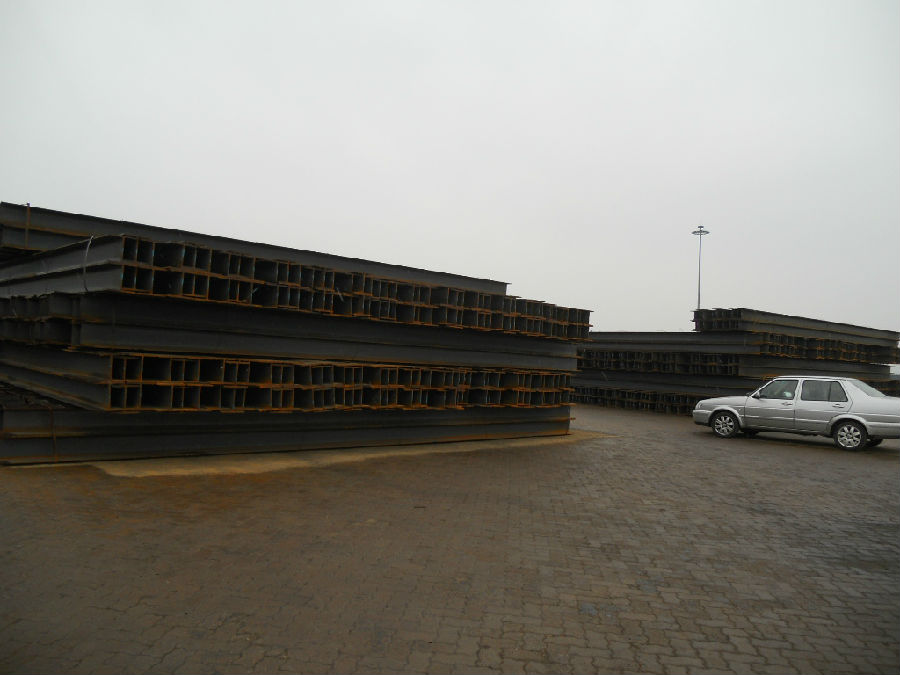
- Q: What are the different types of steel used in manufacturing H-beams?
- The different types of steel commonly used in manufacturing H-beams include mild steel, carbon steel, and high-strength low-alloy steel (HSLA).
- Q: Can steel H-beams be used in underground parking structures?
- Yes, steel H-beams can be used in underground parking structures as they provide excellent load-bearing capacity, structural stability, and resistance to corrosion. Their versatility and strength make them a suitable choice for supporting the weight of the structure and ensuring the safety of the parking facility.
- Q: Can steel H-beams be used in the construction of stadiums or arenas?
- Stadiums and arenas can indeed utilize steel H-beams in their construction. These beams are widely employed in the construction industry due to their exceptional strength, durability, and versatility. Their ability to bear heavy loads and provide structural stability renders them suitable for large-scale projects like stadiums and arenas. When constructing stadium roofs, grandstands, and other load-bearing components, steel H-beams are frequently chosen as the primary structural element. Their remarkable capacity to withstand high loads and resist deformation makes them an excellent choice for supporting the weight of the stadium's roof structure, seating areas, and other facilities. Furthermore, the fabrication of steel H-beams is a simple process, allowing for efficient construction and reduced project duration. Their modular design ensures adaptability to diverse design requirements and permits the creation of open and column-free spaces, which are often sought after in stadiums and arenas. Moreover, steel H-beams boast exceptional resistance to fire, corrosion, and other environmental factors, guaranteeing the long-term structural integrity of the stadium or arena. Additionally, their high strength-to-weight ratio makes them a cost-effective option for large-scale projects. To sum up, steel H-beams are a commonly employed and suitable structural element in the construction of stadiums and arenas. Their strength, durability, versatility, and other advantageous properties make them an ideal choice for supporting heavy loads and providing structural stability in these extensive constructions.
- Q: Are steel H-beams suitable for mezzanine flooring?
- Yes, steel H-beams are suitable for mezzanine flooring. They provide excellent support and structural stability, making them a popular choice for mezzanine construction.
- Q: Can steel H-beams be used for supporting wind turbine towers?
- Yes, steel H-beams can be used for supporting wind turbine towers. H-beams are commonly used in construction due to their strength and structural stability, making them suitable for supporting the weight and dynamic loads of wind turbine towers.
- Q: Are steel H-beams vulnerable to termites or pests?
- Steel H-beams, unlike wood, are impervious to termites and pests. They lack the necessary sustenance for termites and remain unaffected by pest-related harm. Constructed from robust and enduring material, steel H-beams possess resistance against infestations and can endure different environmental conditions. Consequently, they are a dependable option for providing structural support in buildings that face potential damage from termites or pests.
- Q: How do you calculate the deflection limits for steel H-beams under dynamic loads?
- To calculate the deflection limits for steel H-beams under dynamic loads, several factors need to be considered. Firstly, it is important to determine the type of dynamic load that the H-beam will be subjected to. Dynamic loads can be categorized into two main types: impact loads and vibration loads. Impact loads typically occur due to sudden and intense forces, such as a falling object, while vibration loads result from repetitive or oscillatory forces, such as machinery or wind. Next, the beam's material properties, such as the Young's modulus (E) and the moment of inertia (I), need to be known. These properties provide information about the beam's stiffness and resistance to bending. Once the type of dynamic load and the material properties are known, the deflection limits can be determined using several methods. The most common approach is to calculate the maximum allowable deflection based on the beam's maximum permissible stress. This is often expressed as a percentage of the beam's span or a specific limit in millimeters. Another method involves calculating the natural frequency of the beam. By ensuring that the dynamic load's frequency is significantly lower than the beam's natural frequency, excessive deflection can be avoided. This approach is particularly important for vibration loads. In addition to these methods, it is crucial to consider any applicable design codes or standards that govern the deflection limits for steel H-beams under dynamic loads. These codes provide guidelines and safety factors to ensure the structural integrity of the beam. It is worth noting that calculating deflection limits for steel H-beams under dynamic loads requires expertise and knowledge of structural engineering principles. Therefore, it is recommended to consult with a qualified structural engineer or refer to established design codes to ensure accurate and safe calculations.
- Q: Can steel H-beams be used for supporting airport hangars?
- Absolutely, airport hangars can be supported by steel H-beams. In construction, steel H-beams are widely utilized owing to their remarkable strength and durability. They are renowned for providing exceptional structural support and exhibiting resistance to heavy loads, thereby making them an optimal choice for bolstering substantial structures like airport hangars. The distinctive H shape of these beams facilitates efficient weight distribution, ensuring stability and preventing any possible structural failure. Furthermore, steel H-beams can be effortlessly fabricated and tailored to meet the specific requirements of the hangar in terms of size and weight capacity. All things considered, steel H-beams offer a dependable and economically viable solution for supporting airport hangars.
- Q: Can steel H-beams be used for supporting oil or gas pipelines?
- Yes, steel H-beams can be used for supporting oil or gas pipelines. Steel H-beams are commonly used in the construction industry for their structural strength and stability. They can provide the necessary support and load-bearing capacity required for pipelines, ensuring their stability and preventing any structural failures.
- Q: What are the maintenance requirements for steel H-beams?
- The maintenance requirements for steel H-beams mainly involve regular inspections, cleaning, and protection against corrosion. To ensure the structural integrity of steel H-beams, it is important to conduct regular inspections. This can involve visually inspecting the beams for any signs of damage, such as cracks, rust, or structural deformities. If any issues are identified, they should be addressed promptly to prevent further deterioration. Cleaning the steel H-beams is also crucial to maintain their performance. The beams can accumulate dirt, dust, and other contaminants over time, which can potentially impact their structural integrity. Cleaning can be done using appropriate methods, such as pressure washing or using non-abrasive cleaning agents. It is important to avoid using abrasive materials or cleaning agents that can cause damage to the steel surface. Another critical aspect of maintenance is protecting the steel H-beams against corrosion. Steel is prone to rust and corrosion when exposed to moisture and certain environmental conditions. To prevent corrosion, it is advisable to apply protective coatings, such as paint or galvanization, to the steel beams. These coatings act as a barrier, preventing moisture and other corrosive elements from reaching the steel surface. Furthermore, if the steel H-beams are installed in environments with high humidity, corrosive chemicals, or extreme temperatures, additional measures may be necessary. This could include periodic reapplication of protective coatings or implementing measures to control environmental conditions, such as humidity control or temperature regulation. Overall, regular inspections, cleaning, and corrosion protection are essential maintenance requirements for steel H-beams to ensure their long-term durability and structural performance. Following these maintenance practices will help extend the lifespan of the beams and prevent any potential safety risks.
Send your message to us
Hot Rolled Structual Carbon Steel H-beam Bar
- Loading Port:
- China main port
- Payment Terms:
- TT or LC
- Min Order Qty:
- 25 m.t.
- Supply Capability:
- 1000 m.t./month
OKorder Service Pledge
OKorder Financial Service
Similar products
Hot products
Hot Searches
Related keywords


